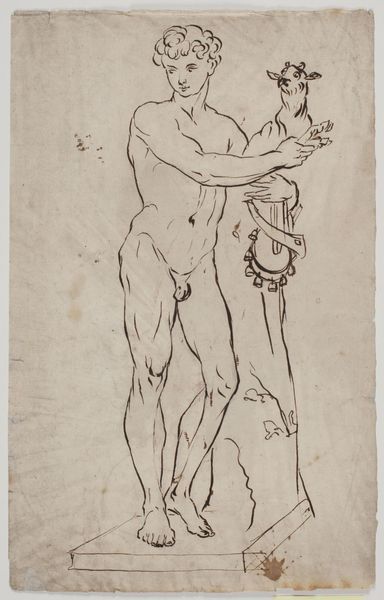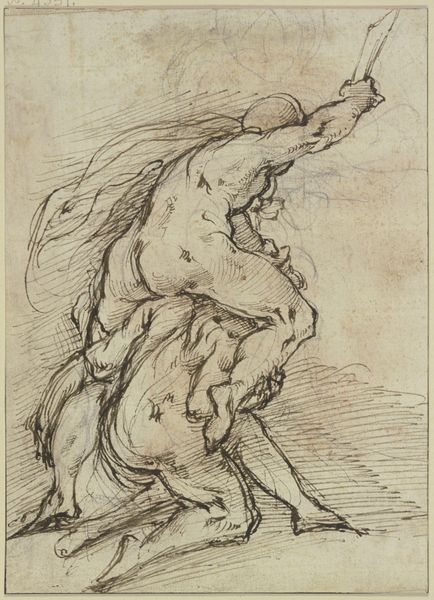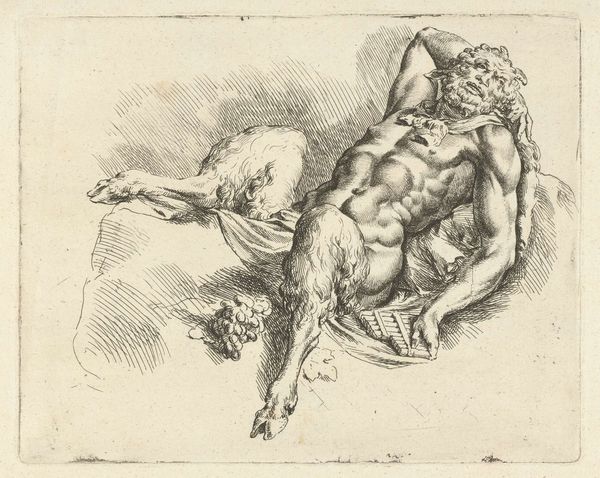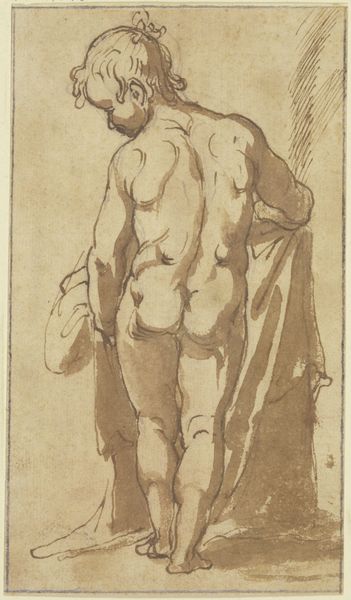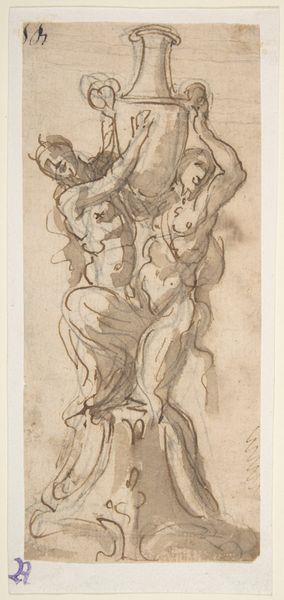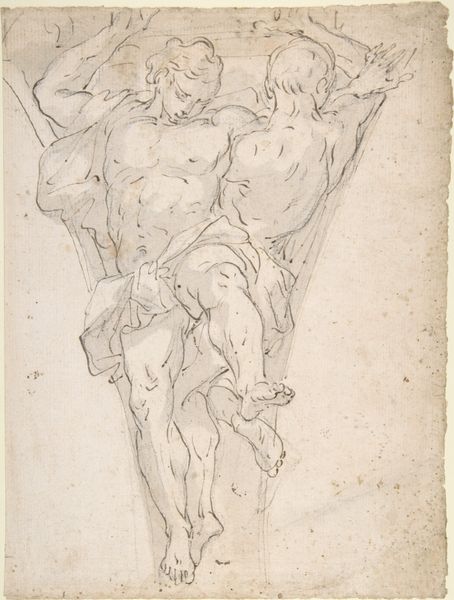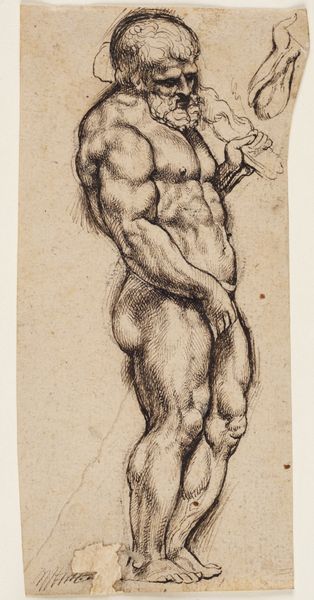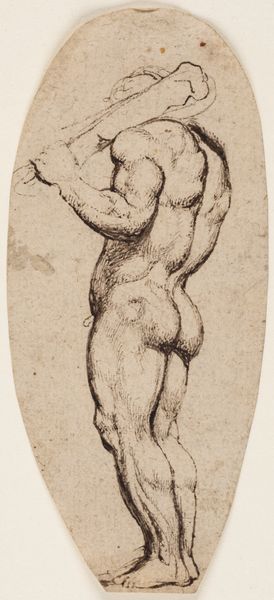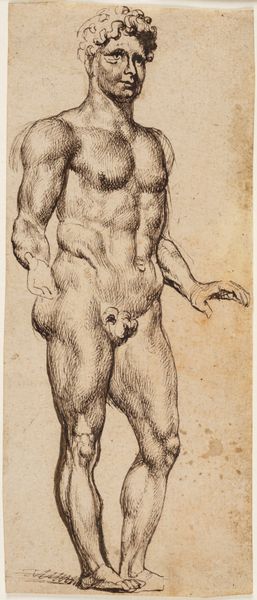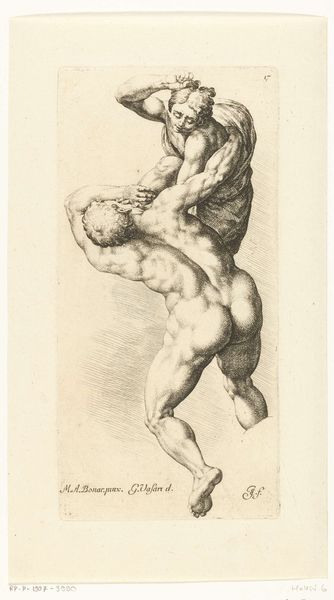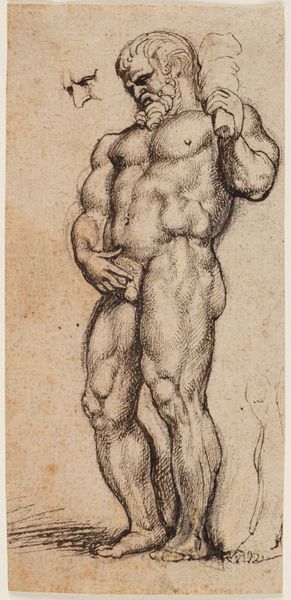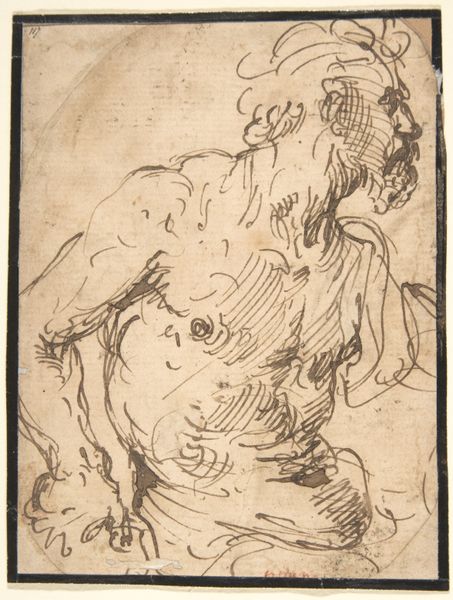
drawing, ink
#
portrait
#
drawing
#
figuration
#
11_renaissance
#
ink
#
italian-renaissance
Copyright: Public Domain
Curator: Here we have Agostino Carracci’s drawing, “Old Satyr to the Left.” It’s rendered in ink, and currently resides here at the Städel Museum. Editor: There's something so melancholic in his expression. Even though he's a satyr, a creature often associated with revelry, his hunched posture and the way he covers his mouth... it feels like he's burdened by something. Curator: Satyrs, these figures—part human, part goat—often served as symbols of base instincts and unrestrained desire, drawing from a deep well of ancient mythology. Agostino, though, complicates this. Note the fine details in his rendering. Editor: The cross-hatching is exquisite, isn’t it? The light falls beautifully across the musculature of his arms and torso, creating a strong sense of depth, contrasting with the slightly frenetic rendering of his lower body with its coarse fur. There's an interesting tension between refinement and raw, untamed nature. Curator: Precisely! That's the crux of it. He's simultaneously idealized and bestial. Carracci, like many Renaissance artists, sought to synthesize classical ideals with Christian beliefs, but they inevitably grapple with these pre-Christian pagan traditions and stories. Satyrs inhabit a fascinating space of transgression and fertility. Think of how Pan, with his reed pipes, evokes not just wildness but creativity and the natural world. It reflects how we might balance our higher and lower selves. Editor: I also notice the laurel wreath. While typical, the presence of such a symbol hints to me that we should resist a straightforwardly pessimistic reading. The wreath could signify triumph over earthly struggles or recognition of artistic ability despite base instincts. Curator: A keen observation. It adds another layer to the ambiguity, doesn't it? This is the enduring power of myth – its ability to hold multiple meanings simultaneously, reflecting the complexities within us all. The Old Satyr then, serves as a timeless reflection. Editor: Yes, and the careful rendering gives tangible shape to what would otherwise remain abstract: making him relatable rather than just a mythological figure. Thank you for this nuanced perspective.
Comments
No comments
Be the first to comment and join the conversation on the ultimate creative platform.
